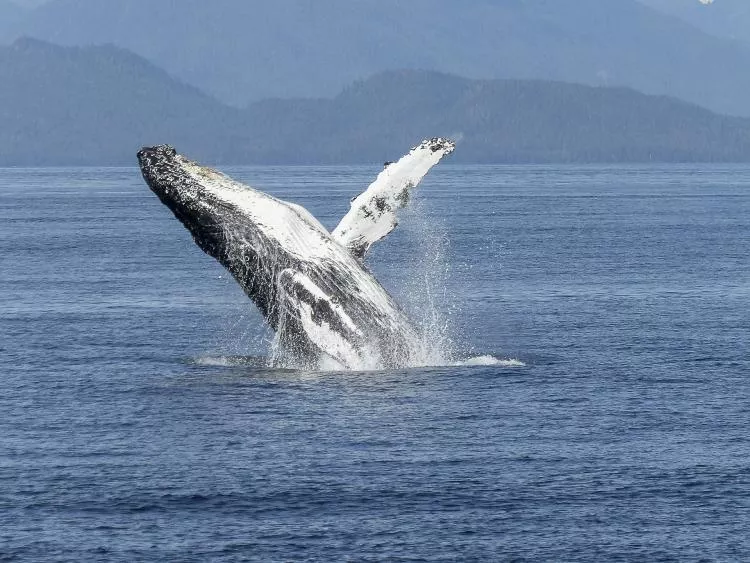Southern Hemisphere whale-call research highlights need for MPA network
Research using hydrophones moored in the Southern Hemisphere to capture the calls of migrating humpback whales has revealed that the high seas, originally thought to be barren, are teeming with life.
The “whup” and “grumble” sounds recorded by hydrophones moored in the Vema Seamount in the Atlantic Ocean, 1,000km northwest of Cape Town in South Africa, suggest this location could be an important stop on the whales’ migration route to polar feeding grounds.
Most of the calls were recorded over a period of three nights in the spring of 2019, with low “whups” being heard most frequently. This is an important discovery as the “whup” is a contact call used by mother-calf pairs to help them locate each other. Furthermore, humpbacks also “whup” while feeding.
Network of MPAs
This ground-breaking research carried out by a team from the universities of Stellenbosch (South Africa) and Exeter (UK) and Greenpeace Research Laboratories highlights the need to create a network of Marine Protected Areas (MPAs) to protect the high-seas habitats that whales rely on.
“Fifty years ago, governments came together to turn around the fate of humpback whales,” said Dr Kirsten Thompson, of the University of Exeter. “Now they have a chance to secure the progress already made and protect the high-seas habitats that whales rely on.”
She added that while large areas of the oceans remained unprotected, such ecosystems were very vulnerable. “A coherent and connected network of Marine Protected Areas [MPAs] across our oceans is urgently needed to ensure seamounts like Vema are protected.”



























